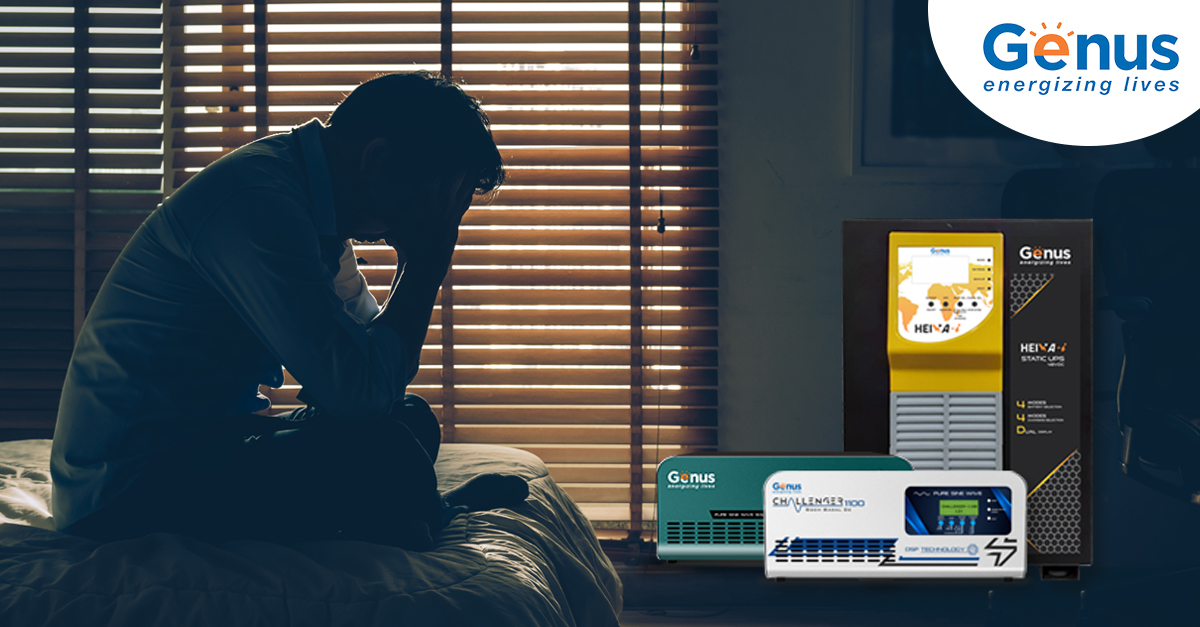
It is near impossible to imagine life without electricity nowadays and we cannot even think of living in complete darkness even for a few hours. This is the reason why inverters, be it traditional, solar, UPS or anything else, have become an important part of our lives. But if your inverter battery is not charging then this could be a cause for concern. This is the reason why we are going to discuss the solutions for the question as “Why is my inverter not charging” and the solutions for “How to charge the inverter battery” if it’s not working.
Also Read: How to Reduce Electricity Bill with Genus Inverters?
Possible reasons why your inverter is not charging
Dead battery
If your inverter battery is not charging then one of the reasons could be that your inverter battery is dead and unable to hold any charge. There is a predetermined lifespan for batteries and similar devices of power storage after which they might not be able to perform and become dead. Another reason might be lack of maintenance due to which the battery can wear out. If this is the case and the battery is dead then you need to replace it with a new battery. However, nowadays it is very easy to buy an inverter battery either online or offline.
Melted fuses
The inverter fuses can get melted or blown off completely due to overusing or overcharging. Along with this, reverse polarity or short circuit might also result in your inverter or UPS battery not charging. If this is the case then it is best to take advice from a professional and let them install a new one. It is important to ensure safety and ask for expert help in case of damage to the battery.
Also read: How to Calculate Your UPS/Inverter Battery Back-up Time?
Loose connections
There are some cases when you might notice that the inverter is not charging even when the mains is on and you have left it for a significant amount of time to charge. This could be because of no connection or loose connections of the battery to the charging inverter. You can check the connections if they are proper or loose after switching off the inverter and then switch it back on and see if it is working or not. If it still doesn’t work then you can disconnect all the wires, take a dry and clean piece of cloth and wipe away the dirt with it. Then connect all the wires again tightly after cleaning it and then try to charge the inverter.
Burnt rectifiers
Rectifiers act as an important part of the inverter as they serve the purpose of converters and convert AC into DC. If in case, due to high heat or overuse or other reasons, they get burned then the battery will not charge. In this case, you should seek the help of a professional and get the inverter checked and repaired. To avoid this problem in future, you need to make sure that the:
- Cooling fans are working fine
- Internal circuitry is good and
- Inverter is not kept in not spot
Tripped inverter
If your appliances are utilizing too much power under the inverter load then the inverter might turn off completely due to this. Don’t get panicked by this as it might be possible that the inverter has just tripped off due to excess load. In this case, all you need to do is just press the reset button on the inverter after waiting a while and the power should come back.
Also read: A Simple Guide to Smart Inverter Technology
Alarm beeping continuously
The temperature of the inverter could rise significantly due to a stuck cooling fan or overload and this might cause the alarm to beep continuously. In this case, the inverter might not work at all. For fixing this, let the inverter cool down by turning off the appliances running on inverter. The fan would start working and the alarm will stop.
Also Read: Tips to Pick the Right Inverter for Expeditions
Corroded battery terminals
If the battery terminals get corroded somehow due to water or moisture, it might not stop charging but the power backup will reduce gradually. You can try the cleaning solutions available in this case and clean the battery terminals completely such that they are like new once again. After this, you can try to charge the inverter and now there should be any problem.
Also Read: Generator v/s Inverter Back-up: Pros and Cons
Protective methods
So now you are aware of the common reasons behind the problem of inverter not charging. While it is important to know these reasons, you must also take some of the preventive measures that can help you save time and avoid trouble in future.
Maintain cleanliness: Over time, there is accumulation of dust over the inverter. You need to make sure that the inverter and inverter battery are clean to make sure that the functionality and airflow is proper.
Regular Maintenance: You should maintain regular cycles of checking the inverter and keep an eye on the signs of wear and tear. In case there are any such signs, replace the parts as per the requirement.
Track the performance: It is important to monitor and keep an eye on the performance of the inverter, including the charging rates and battery voltage. With this, you can notice the issues well before they turn into major problems and resolve them.
Best installation: At the time of inverter installation, it is important select the location that is free from extreme moisture and temperatures.
Conclusion
You bought inverter for staying away from the hassle of frequent power cuts and get power backup to keep your work uninterrupted. Now if the inverter battery is not charging properly or having any problem then it is important to fix it. Inverters act as an important device offering necessary power backup at the time of outages and therefore it is essential to make sure that they are working in proper condition. With the help of the information shared in this blog, you will be able to notice any issues in the inverter and address them properly on time. This will help you enjoy lasting performance of the inverter keeping the hassles at bay.
